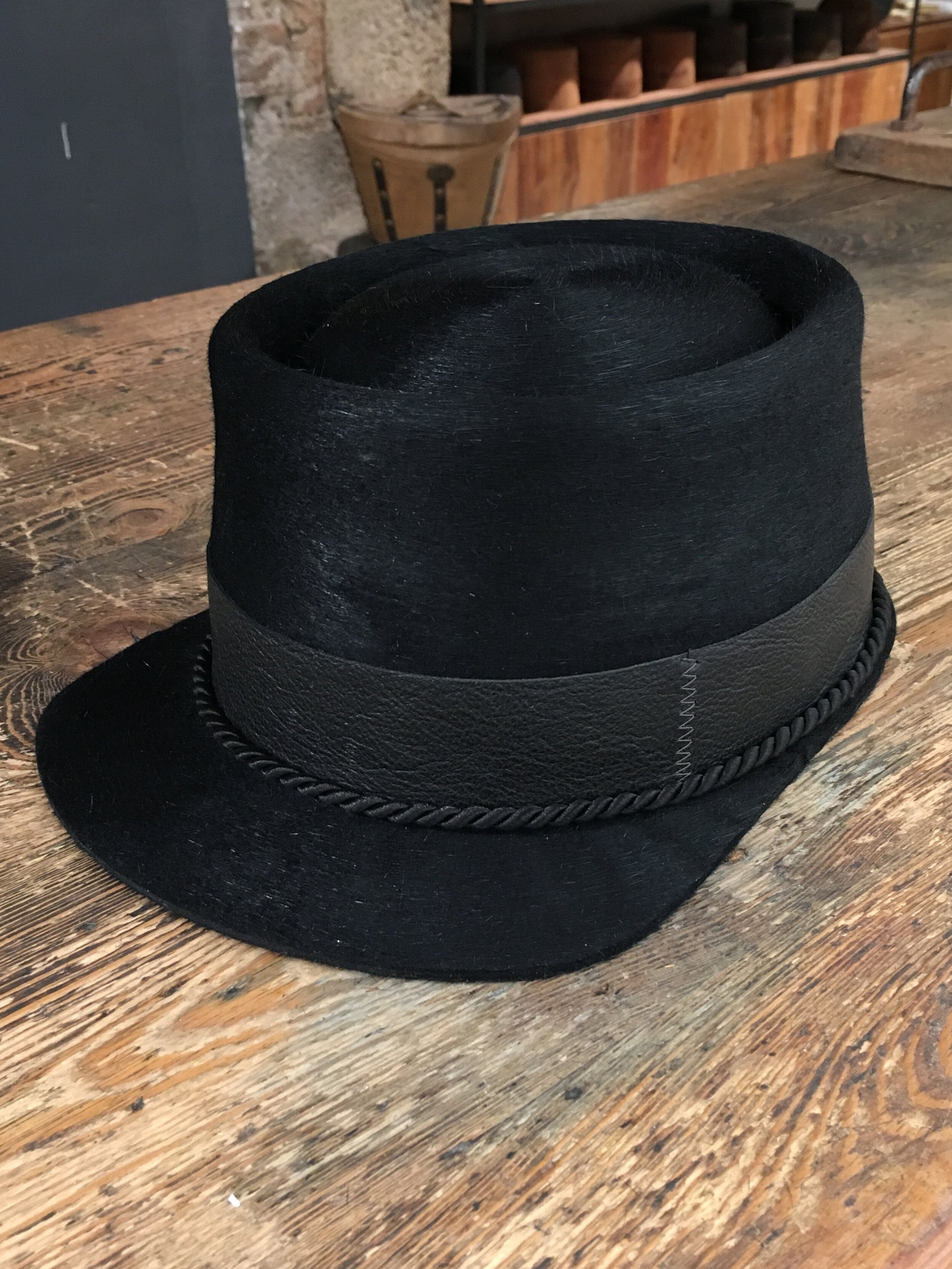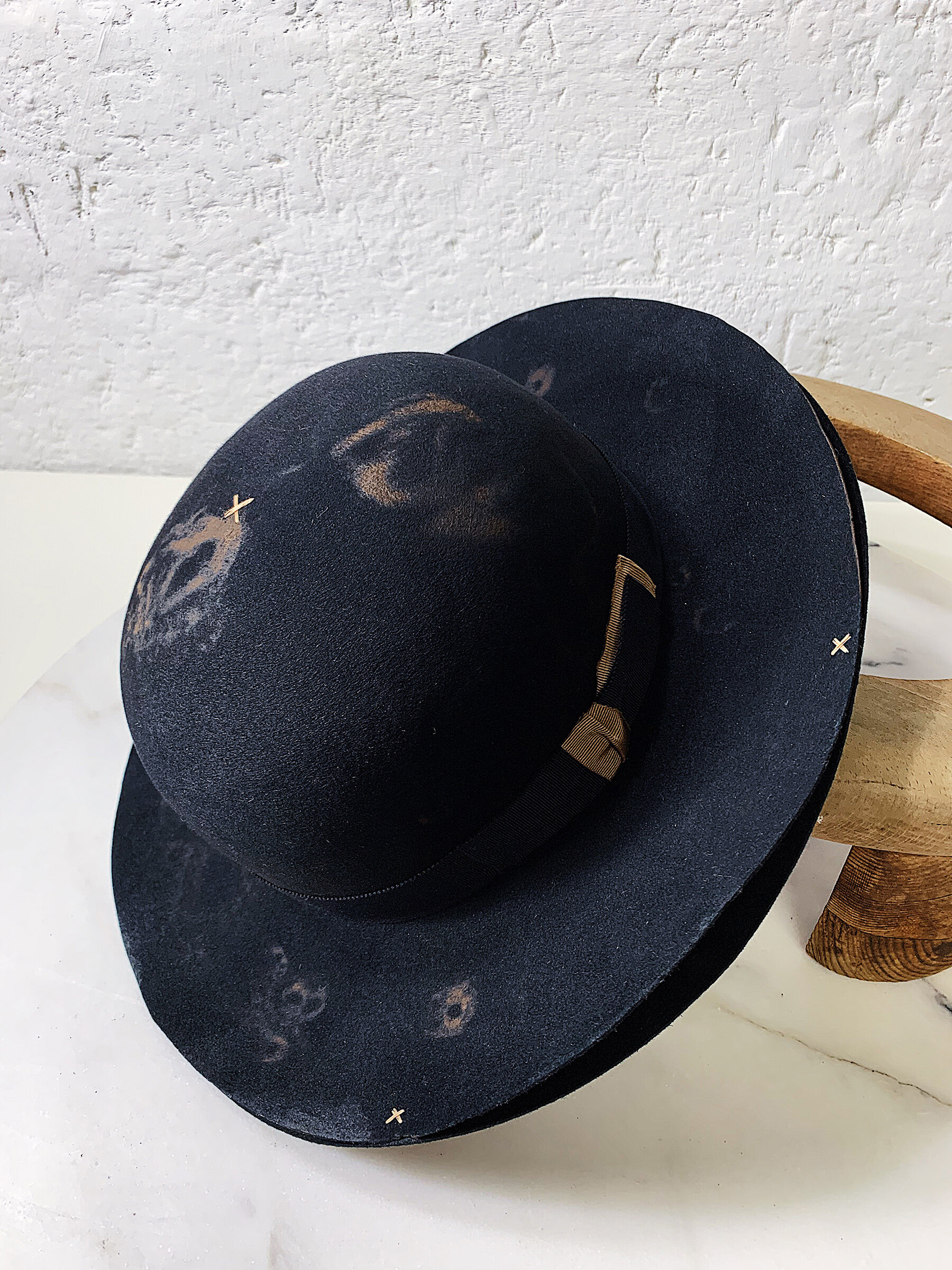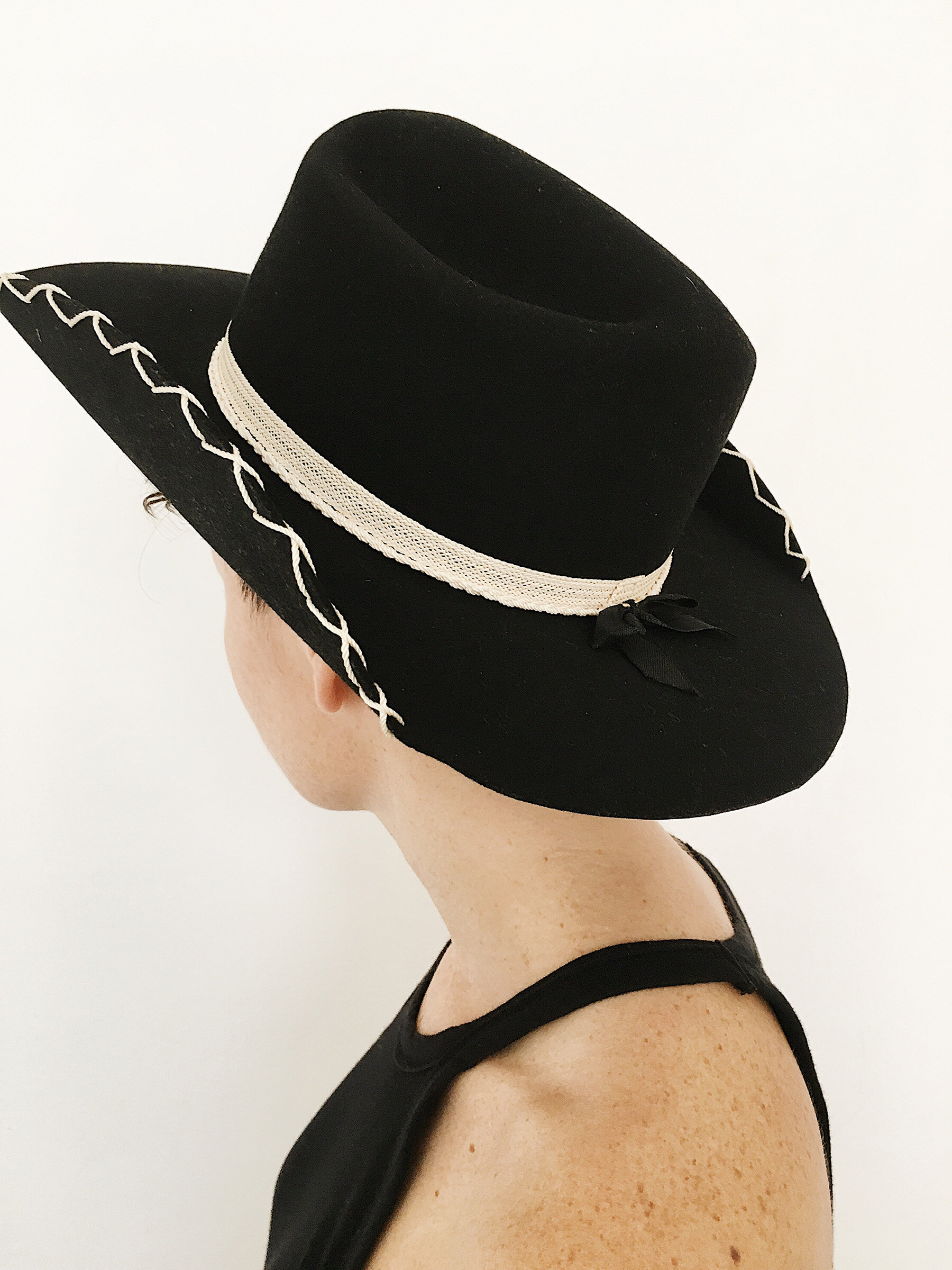RYO Hats
How did you become a hat lover?
I am an industrial designer. After graduating from university, I started working in the family business in Argentina, making artisanal leather shoes. At that time, I fell in love with the craftsmanship of stylized accessories.
In 2018, whilst living in London, I saw a Japanese gentleman walking in Mayfair dressed in 1900 formal fashion, cane in hand and a shiny top hat... it shook me off my feet, and I couldn't stop staring at him as he walked past; so full of grace. Back at home, I started to research this type of attire, especially the top hat, which impressed me the most, making him look so unique and elegant. From that day, my fascination for hats has never stopped growing.
Your hats are so unique with so much personality. You play with shapes, colors, textures and trimmings. Where do you get your inspiration from?
I have a very multicultural background and have lived in many different places to this date. I was born in Costa Rica, my dad is Japanese, and my mother is Argentine. Growing up and studying in Buenos Aires gave me my Latin identity. Later on, moving to Tokyo, where I spent five years, helped me connect with my Japanese heritage, where I learned the Japanese design and philosophy of Wabi-Sabi. I also lived in London for some time, and there I was inspired by the arts & crafts movement. Now I'm based in Barcelona, where 20th-century designers like Verner Pantno, Axel Einar Hjorth, Jean Royere or Ettore Sottsass inspire me.
From all these places, I draw inspiration from their folklore, their people and the cultures. Hats are living objects, a cultural product, and I look everywhere around me for inspiration.
Describe your creative process, from start to finish. Any challenges along the way?
I work with very old tools from a retired hatter, which reminds me to take my time on each piece I make.
My creative process starts when I first meet the client at the studio when we talk about what they are looking for or get inspiration for new design ideas from hat blocks to music. For me, all the creative disciplines share the same language. Once this idea becomes a clear design, I will decide the materials, fabrics and color scheme for the style.
Then the blocking takes place; there are many working, and resting steps to work the raw material, such as sanding, brushing and stiffening the felt to achieve the desired finish.
Once the blocked felt is dry, I can go ahead and do the shaping by hand. Here I work with my instinct until I achieve the shape that pleases my eye.
At this point, I have a naked hat, and sometimes my design will change from the original conception, giving way to a different idea... I may leave the hat sitting in the studio, come back to it the next day with fresh eyes, then handcraft and place the sweatband, outer band, or trimmings and finalize every detail.
What made you want to pursue hat making?
I always wanted to design beautiful objects for people. Working with my hands gives me happiness and peace.
To me, hats are the perfect product; they are functional, symbolic and stylish.
It is an object with the right balance between design, culture and pulse.
Tell us about your favorite hat.
My favorite hat changes with the day, weather and mood I'm in.
My favorite style is the Cordoba hat, a traditional hat from southern Spain. It speaks to me from its sharp and clean lines and has an iconic presence with an elegant flair, which is something hard to find in most things.
What themes are you exploring in your works?
Traditional Spanish styles; Imperfection as a way of individuality; Western classics; Upcycling to transcend fashions
You also repair and refurbish hats. What began your journey, and what advice do you have for anyone trying to keep their hats in excellent condition?
When I first started hat making, I decided to look for good quality hats at vintage fairs (my all-time passion) to reverse engineer them and learn how they were made. Many times, this is much more complex than hats made by modern mass production. I realized how noble a material felt can be because I could refurbish even the oldest hat to create an entirely new hat.
My advice is always to buy the best quality materials you can afford because this makes the difference in time and finished product. Even if you buy a second-hand hat or a refurbished one, fur felt is always a good idea. Then we can keep our hats in excellent condition by brushing them often to keep the dust away, keeping them well stored in boxes or, if it's of daily use, remember not to let them sit in direct sunlight or sources of heat. If they ever get wet, let them dry on a clean surface, upside down (brim up) at natural temperature. Never try to dry it with heat because this may shrink the hat.











Meet Nadia Valavanis, founder and creator of BSVII ( BS- seven), who fuses her love of psychology and craftsmanship to turn her customer’s stories into stunning creations.